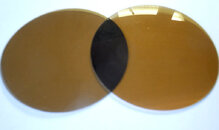Johnoly
Contributor
- Messages
- 4,692
- Reaction score
- 6,824
- # of dives
- 2500 - 4999
Every great public event always ends with 'Fireworks'..... A neverending story,....
At the tests conclusion,,,,All the masks that failed should be strapped on to an AL80 filled with explosives and blown up in a safe location ! !







